‘That’s shame’ - Maurice Longbottom’s painful journey from outsider to Indigenous crusader
When Maurice Longbottom steps foot on the field at the Paris Olympics, his boots will tell the story of his journey from feeling shame about his heritage, to proudly displaying it to the world.
Olympics
Don't miss out on the headlines from Olympics. Followed categories will be added to My News.
When Maurice Longbottom steps on to the field at the Paris Olympics, he’ll be sporting a new pair of Indigenous designed boots nobody has seen before, and it will represent much more than a showcasing of his culture.
It will tell the story of his own journey from feeling shame about his heritage, to proudly displaying it to the world.
“Back in the day we’d be scared and in our shell, I felt that growing up as a kids I felt that for sure, walking around certain areas and you feel a little bit different,” Longbottom said.
“And now, I couldn’t be prouder of the colour of my skin and who I am. Then it’s up to them whether they like me or not, I’m not here to please them, I’m here to live my life, and live for my culture.”
Longbottom, from the Dharawal people in Sydney, will step out for his second Olympics campaign in July and just like in Tokyo, he’ll have specially designed boots with Indigenous prints and designs for each game.
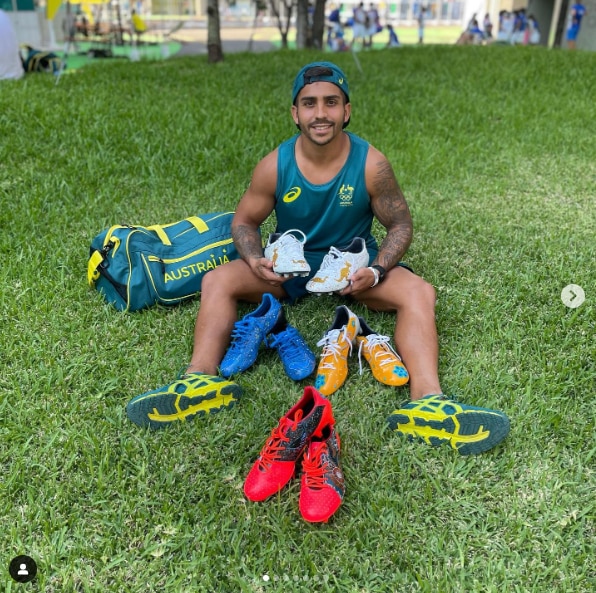
He works with Dubbo-based artist Jason Phillips, who designs the print with input from his wife Mandy and their two children.
In Tokyo, one of the boots was a tribute to Longbottom’s late Aunty, Gina Stewart.
“They’re something I hold very close to my heart, I rarely give them away,” Longbottom said.
“I gave one pair to my nephew, and one to my cousin Michelle – who I had to ask permission to use her mum’s name after she’d passed away on the boots – and I wore those in Tokyo and I gave them to her after Tokyo.
“My aunty Gina was someone who was always there when I was playing footy growing up, working the canteen, always followed me wherever I went and sending me messages, she was very special to me.
“I wear them for big occasions like the Olympics, I wore them during the World Series at Allianz Stadium in Sydney just because I was on home soil, with my family and friends.
“It’s a symbol of what means most to me, my culture and my family.’
“And it also makes me feel grounded when I’m away from home for long periods of time.
“I’m speaking to Jason now about Paris, he’ll ask, ‘What do you want on it, what do you want to represent, what story do you want to tell?’
“The last ones I got done were in Sydney and I said ‘You have free reign’, because the last ones I said ‘This is what I want and my stories’.
“I had six pairs of boots in Tokyo, a pair for each game.
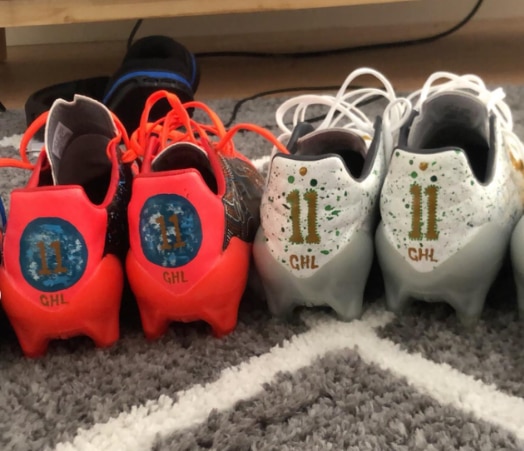
“Every single pair of my boots have my grandfather’s initials on the back (GHL),George Henry Longbottom, he is someone I look up to, man of the family, head of the house, someone really close to my heart.
“This time I’ll take four or five pairs of boots, and again each boot will have a different meaning and stand for something different, but there’ll be things that are always on my boots like my grandfather’s initials, my number (11) will be on there, and the Olympic rings will be on there.
“And it’s not just me, we’ve got a few Indigenous athletes on the Australian team that will be representing the culture in different ways, I am proud that we’re strong and confident enough to be showing the world who we are.”
The boots for his Aunty Gina also featured a whale, and Longbottom explained: “My whale is my totem, so when I pass away that’s what I’ll be in my afterlife.
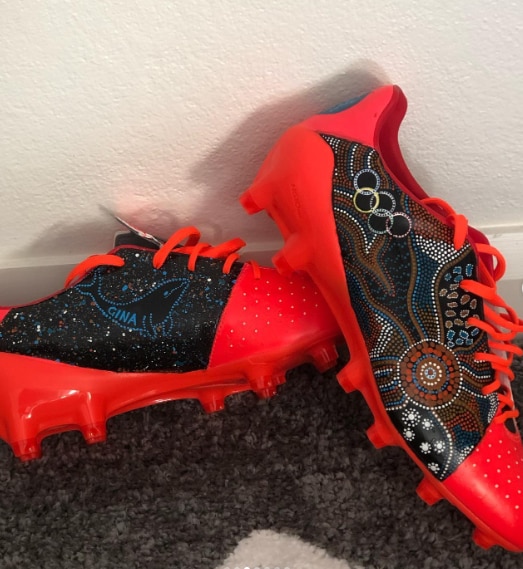
“Every Aboriginal person has a totem.”
The 29-year-old Longbottom is pleased to see a shift happening in Australia’s treatment of Indigenous people.
“There’s still a lot of racism in this world, I don’t think we’ll ever get rid of it, that’s the way people are brought up and want to bring their kids up, it’s horrible to think we’ll never stamp it out,” he said.
“People are constantly trying to tear us down, I don’t know for what reason. We’re all the same, we’re all human, it’s just our different skin colour and where we come from.’
“But I couldn’t be prouder to see where it is now, people standing up for the rights, people outside of the Indigenous culture coming in and helping and standing up for what they know is right.
“For me that’s very powerful.
“For myself, seeing it grow from what it was to now, how passionate all us Aboriginal and Indigenous people are about our culture, we’re not afraid to speak up and say we’re Indigenous.
“It’s been a big learning curve for me as a young Indigenous kid, there’s a lot more teaching happening now than there was back in the day which is good to see, a lot of people wanting to learn Aboriginal culture and what it’s about, what we stand for.”
However, Longbottom can’t help but feel envious when he looks across the ditch and sees young children performing haka and speaking Maori words at school.
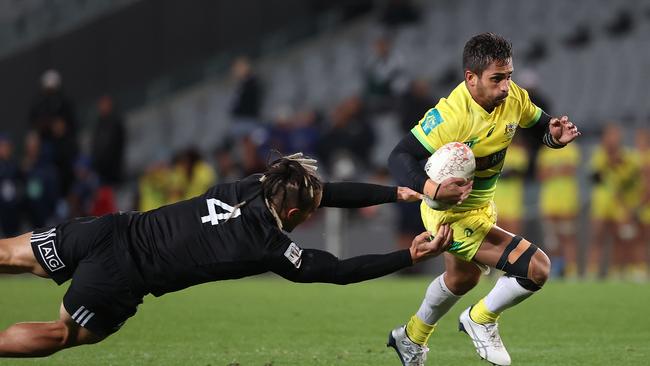
“We’re the longest living culture in the world, I’m very proud of my culture and my people, but you see in New Zealand [with the Maori], that culture is embedded in them from a young age, it’s something I’m very jealous about,” Longbottom said.
“It’s something we can be better at in Australia, for young Indigenous kids having that learning, where we can learn our culture, our dances.
“As a young kid I remember we used to dance all the time and we used to think, ‘That’s shame, that’s shame’. But as you grow up, that’s not shame, that’s who you are, you’ve got to erase that, you’ve got to be out there and doing it proud.
“But I am jealous of the Kiwis where they have that culture exposed to them at a young age, and in Australia we’ve let that slip.”
Longbottom has connected closely with his local community in recent times, and that has given him hope for the future.
“In my area in La Perouse we do a mullet haul every couple of months; the mullet come into the bay and swim around and the elders go out on the boat, put the net out and all the young kids on the beach help pull the net in,” Longbottom said.
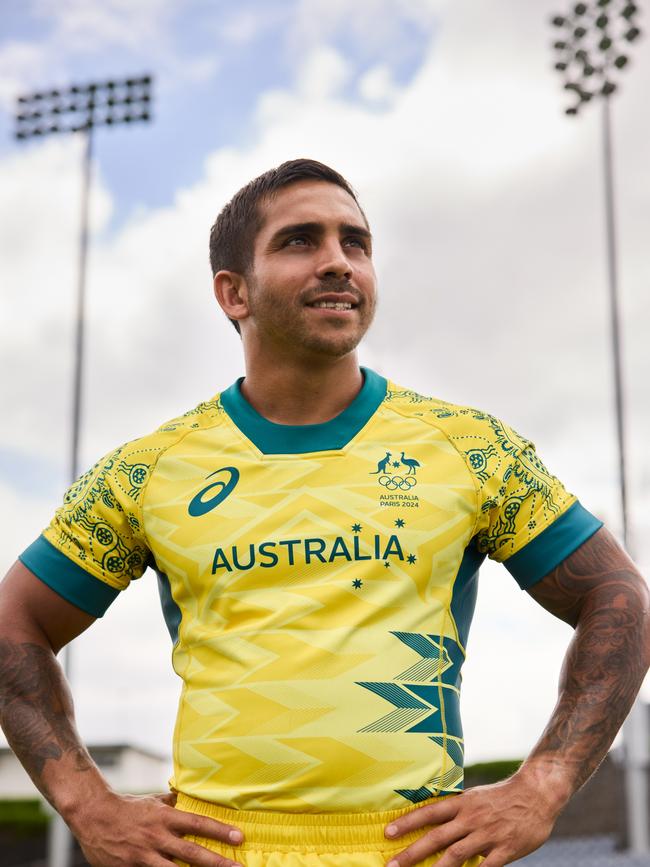
“It’s teaching our young generation how to fish, how we used to do it back in the day. Just that little bit of knowledge will help them continue to do that and then teach the next generation of kids how to do it, that’s amazing for me.
“There are five and six-year-old kids pulling the net in, and the older people out the back doing the hard yards – cutting the fish, skinning them, getting the gills out, and they share it all around the community – but seeing the younger kids down there makes me really happy.
“When I’m down there, I just feel safe. It’s home. You don’t have to try to be someone you’re not, you go down there and nobody judges you, it’s all one community.”
More Coverage
Originally published as ‘That’s shame’ - Maurice Longbottom’s painful journey from outsider to Indigenous crusader





